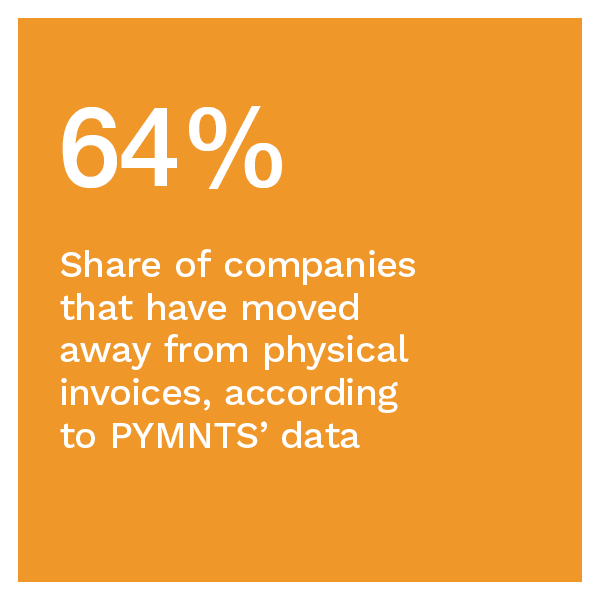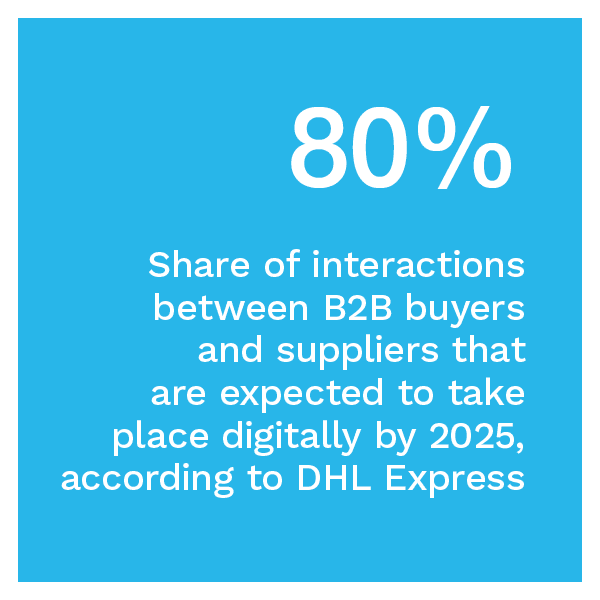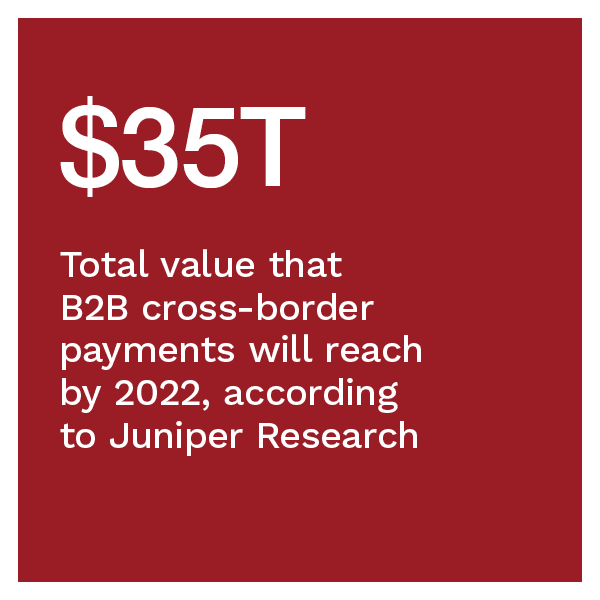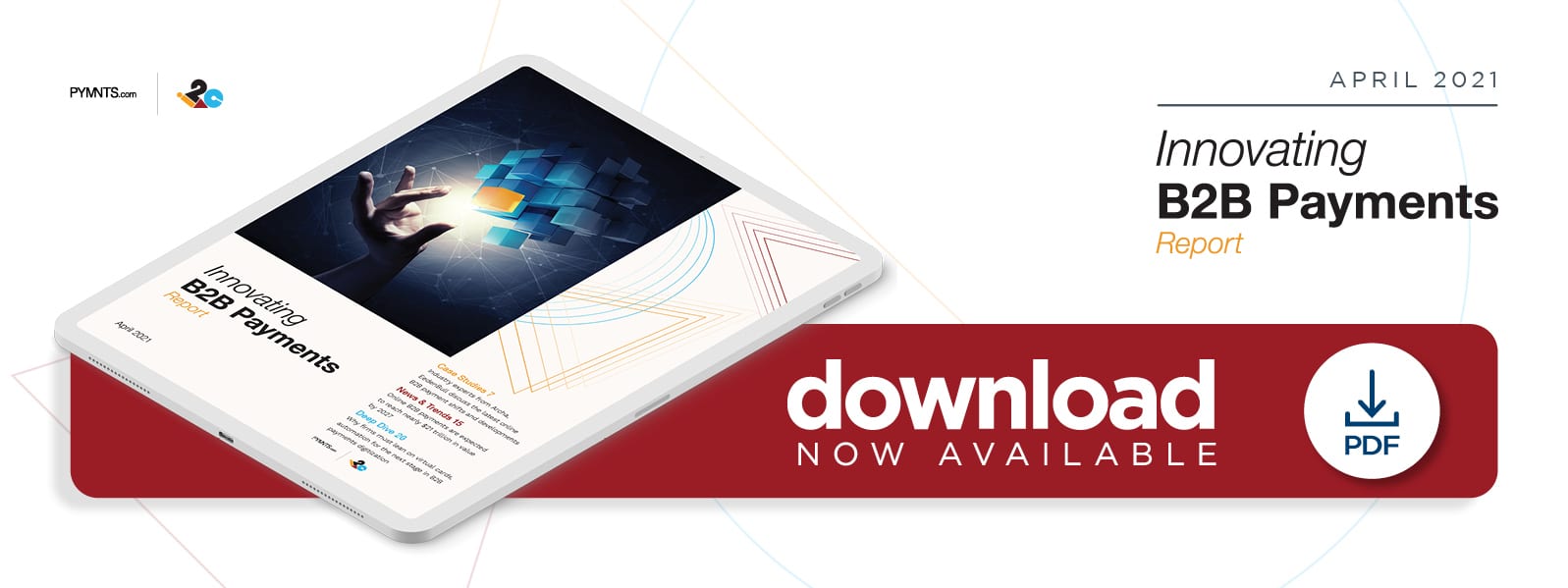NEW REPORT: Automation, Virtual Cards Key To Streamlining B2B Payments

Companies worldwide were already working to digitize their business-to-business (B2B) payment processes well before the start of the pandemic. The ability to support electronic B2B payments has changed from a nice-to-have to a must-have for firms, however, accelerating the need to shift away from manual processes swiftly.
The effects of the pandemic on how businesses make or receive payments or conduct typical business operations are also likely to be permanent shifts, especially as more business professionals expect digital optimization for every transaction they make. Many B2B buyers and sellers are already well used to seamless online business-to-consumer (B2C) transactions, and they now expect their B2B purchasing processes to mirror that same efficiency and speed.
In the inaugural Innovating B2B Payments Report, a PYMNTS and i2c Inc. collaboration, PYMNTS analyzes both how the ongoing pandemic has accelerated the need for B2B payment digitization as well as how it has affected companies’ strategies for such innovation. It also examines the increasing importance of tools and technologies including automation, application programming interfaces (APIs) and virtual cards within the expanding digital B2B payme nts space.
nts space.
Around The B2B Payments World
Another factor that may be driving B2B payments digitization forward is the changing dynamics of the typical business workspace — millennials are moving into decision-making roles at many companies, for example. Seventy-three percent of professional B2B purchasing decisions at firms are already made by members of this generation, widely regarded as the first “digitally native” generation. Such workers already expect to see seamless digital payments when making B2C transactions, something that could therefore be a key driver of future B2B payment digitization as such decision-makers work to bring these processes more in line with the digital B2C payment experiences they already enjoy.
Streamlining B2B payment processes to better fit customers’ needs in an increasingly digital world is becoming key for firms as this drive to digitization continues. Tailoring key aspects of the buyer-seller relationship to fit this online model is critical to businesses looking to compete. Sixty-four percent of companies admit there are challenges inside the B2B rebate management process, for example. Integrating technologies, such as artificial intelligence (AI), could help to solve some of these struggles, by helping companies to automatically adjust their pricing or rebate processes to meet the needs of individual clients. This could, in turn, allow them to stay more competitive as the digital B2B world becomes more saturated.
Digitizing B2B payment  processes is also becoming more critical for many businesses as they move into new markets, with global B2B commerce expanding. Cross-border payments account for about 26 percent of United Kingdom and United States businesses’ annual sales, for example, but finalizing such payments is often a lengthy and cumbersome process. Leveraging automation could help to remove some of the frustrations associated with these payments, with 11 percent of firms announcing plans to introduce automation into their cross-border B2B payment processes. Businesses should carefully examine the benefits these technologies could provide and how they can put them to use as global B2B commerce continues to grow.
processes is also becoming more critical for many businesses as they move into new markets, with global B2B commerce expanding. Cross-border payments account for about 26 percent of United Kingdom and United States businesses’ annual sales, for example, but finalizing such payments is often a lengthy and cumbersome process. Leveraging automation could help to remove some of the frustrations associated with these payments, with 11 percent of firms announcing plans to introduce automation into their cross-border B2B payment processes. Businesses should carefully examine the benefits these technologies could provide and how they can put them to use as global B2B commerce continues to grow.
For more on these and other stories, visit the Report’s News & Trends.
Archa, Eedenbull Discuss How B2B Payment Trends Are Evolving
Digitizing B2B payment processes takes more than simply switching from outdated paper checks to emerging electronic methods — although that is often one key step. Companies must examine the strategies and solutions they are employing throughout this process to ensure they are truly meeting the needs of their clients and their own businesses as payments become more virtual.
To find out more about how companies’ B2B payment needs are shifting and what tools and technologies are proving critically important in this changing environment, PYMNTS spoke to industry experts, including Oliver Kidd, CEO of Australian corporate card provider Archa, and Nicki Bisgaard, CEO of B2B payments-focused FinTech EedenBull.
Find out more in the Report’s Case Studies.
Deep Dive: How Automation, Virtual Cards Can Help Firms Meet Their Ne xt-Gen B2B Payment Needs
xt-Gen B2B Payment Needs
Many businesses were already upgrading the speed and efficiency of their B2B payments prior to the pandemic — approximately one-third of firms are now relying on electronic methods for the majority of such payments, for example. The crisis has only introduced friction into already slow manual payment processes, bumping up costs for those businesses that may have been slower to innovate than their competitors, for example. It can be difficult for companies that are still relying on legacy infrastructure to upgrade their payment processes as quickly as they may like, as cost and an inability to pair outdated infrastructure with emerging tools, such as virtual cards, hamper their ability to innovate.
To learn more about how automation and APIs can help companies bridge this gap, visit the Report’s Deep Dive.
About The Report
The Innovating B2B Payments Report, a PYMNT and i2c Inc. collaboration, examines the latest trends and developments within the B2B payments space, as well as the growing role of technologies and tools, such as APIs and virtual cards, as digitization of these processes continues.

